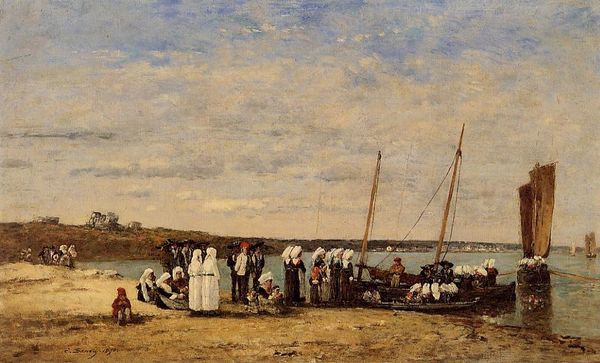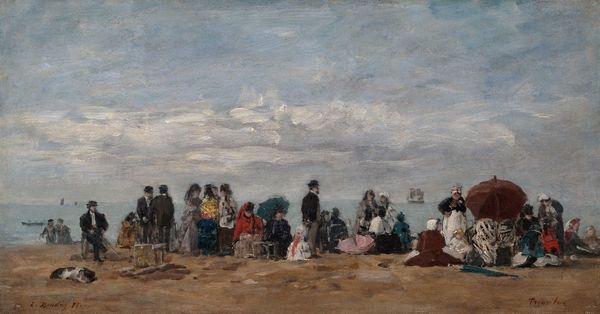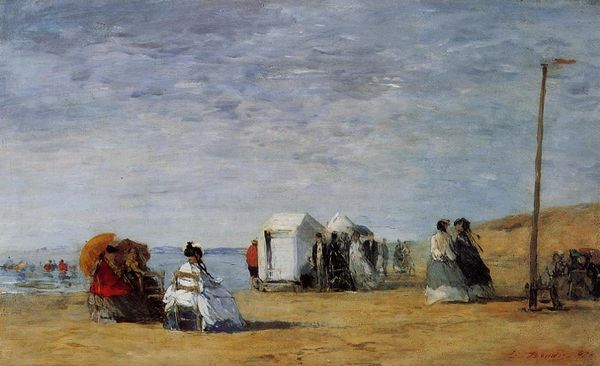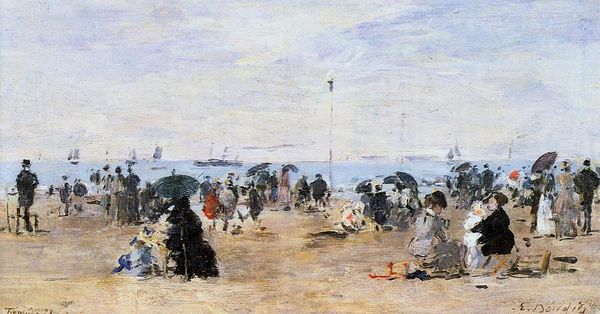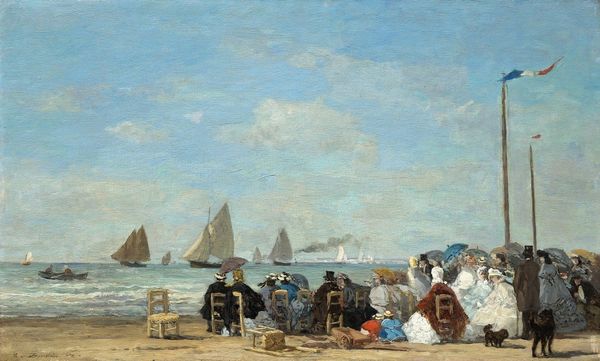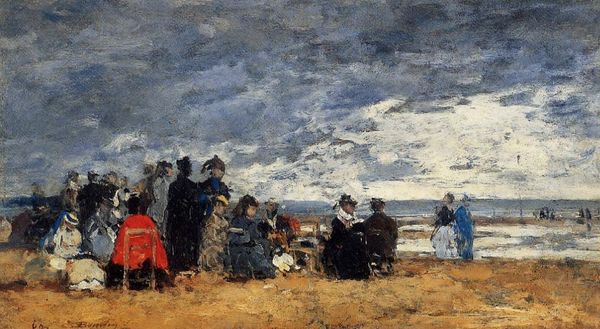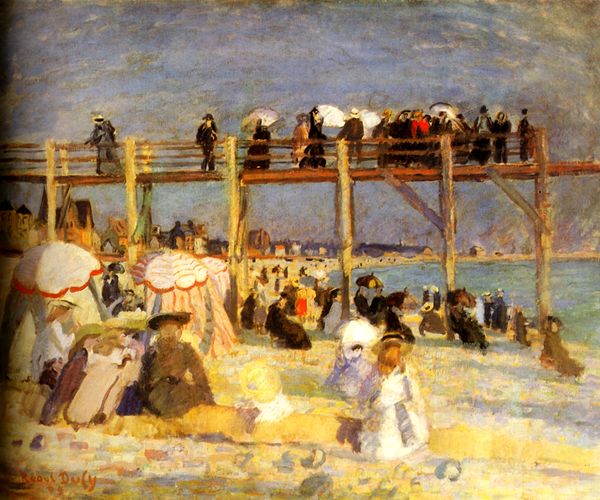
painting, plein-air, oil-paint
#
painting
#
impressionism
#
plein-air
#
oil-paint
#
landscape
#
oil painting
#
cityscape
#
genre-painting
#
realism
Copyright: Public domain
Editor: Here we have "The Beach at Trouville," painted by Eugène Boudin in 1864. It looks like an oil painting, a breezy day at the shore. There’s a subdued yet pleasant mood about it, almost like a faded photograph. I wonder, what captures your attention when you look at it? Curator: Ah, yes, Boudin! What catches my eye first? Well, isn’t it funny how a simple scene, a group of people enjoying a beach, can feel so evocative? For me, it’s the sky. He was, you know, a master of skies, Boudin. He called them his "studies." I almost feel like I can smell the salt in the air, hear the faint cries of the gulls. The painting almost feels like memory itself, like something half-remembered. Don’t you think? Editor: Definitely, it does have that quality! It's so different from how we see beaches today, all bright colours and harsh light. Curator: Exactly! And look at the people - these aren't anonymous beachgoers; Boudin has captured a certain social class, the burgeoning middle class enjoying their leisure time. He is not simply recording the scene, but subtly commenting on it. Does it invite you to reflect? Editor: It does, actually. I suppose it prompts you to think about who has access to leisure. How their world differs to the labourers' world at the time. Thanks for this great view. Curator: My pleasure! These little portals into the past can spark surprisingly powerful connections to our present!
Comments
No comments
Be the first to comment and join the conversation on the ultimate creative platform.
